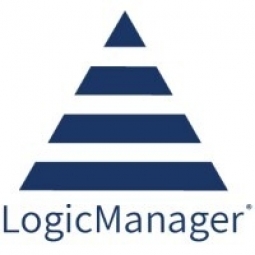Customer Company Size
Large Corporate
Region
- America
Country
- United States
Product
- LogicManager
Tech Stack
- Enterprise Risk Management Software
Implementation Scale
- Enterprise-wide Deployment
Impact Metrics
- Cost Savings
- Customer Satisfaction
Technology Category
- Application Infrastructure & Middleware - Data Exchange & Integration
Applicable Industries
- Healthcare & Hospitals
Applicable Functions
- Business Operation
Services
- System Integration
- Data Science Services
About The Customer
The customer is a large health plan provider that provides coverage to more than half of its state's population. With a membership of over 500,000, the customer works alongside industry partners like the National Committee for Quality Assurance (NCQA) to continue providing affordable plans to its members. The customer extends its impact through an affiliated nonprofit foundation that supports social welfare and increased access to healthcare services. The company is a nonprofit organization with 1,000 - 5,000 employees and $2.9B in revenue. The company operates in the insurance industry.
The Challenge
The health insurance provider was facing major cash flow disruptions due to sudden losses of large accounts to competitors, especially during renewals. The company had multiple divisions and products, and used spreadsheets to report separate account revenue and cost data to the CFO. Connecting revenue to the direct costs, aggregating this information, and tracking data over time were error-prone and time-consuming processes. The cross-functional nature of product usage and double counting data made results difficult to interpret accurately.
The Solution
The customer used LogicManager to monitor revenue and direct costs from multiple systems, aggregating this information to track data over time. Visualizing these trends in charts provided a clearer picture over time. The customer discovered that a major cause of cash flow issues was the acquisition of existing members by competitors, especially during renewals of large accounts. In response to the new data collection methods, the customer was able to set risk tolerances on losses of key accounts, as well as their impact on cash flow. Formalized risk tolerances allowed the risk manager to build a business case for developing and deploying educational programs designed to decrease customer claims and prevent the increase of insurance premiums.
Operational Impact

Case Study missing?
Start adding your own!
Register with your work email and create a new case study profile for your business.
Related Case Studies.

Case Study
Hospital Inventory Management
The hospital supply chain team is responsible for ensuring that the right medical supplies are readily available to clinicians when and where needed, and to do so in the most efficient manner possible. However, many of the systems and processes in use at the cancer center for supply chain management were not best suited to support these goals. Barcoding technology, a commonly used method for inventory management of medical supplies, is labor intensive, time consuming, does not provide real-time visibility into inventory levels and can be prone to error. Consequently, the lack of accurate and real-time visibility into inventory levels across multiple supply rooms in multiple hospital facilities creates additional inefficiency in the system causing over-ordering, hoarding, and wasted supplies. Other sources of waste and cost were also identified as candidates for improvement. Existing systems and processes did not provide adequate security for high-cost inventory within the hospital, which was another driver of cost. A lack of visibility into expiration dates for supplies resulted in supplies being wasted due to past expiry dates. Storage of supplies was also a key consideration given the location of the cancer center’s facilities in a dense urban setting, where space is always at a premium. In order to address the challenges outlined above, the hospital sought a solution that would provide real-time inventory information with high levels of accuracy, reduce the level of manual effort required and enable data driven decision making to ensure that the right supplies were readily available to clinicians in the right location at the right time.

Case Study
Gas Pipeline Monitoring System for Hospitals
This system integrator focuses on providing centralized gas pipeline monitoring systems for hospitals. The service they provide makes it possible for hospitals to reduce both maintenance and labor costs. Since hospitals may not have an existing network suitable for this type of system, GPRS communication provides an easy and ready-to-use solution for remote, distributed monitoring systems System Requirements - GPRS communication - Seamless connection with SCADA software - Simple, front-end control capability - Expandable I/O channels - Combine AI, DI, and DO channels

Case Study
Driving Digital Transformations for Vitro Diagnostic Medical Devices
Diagnostic devices play a vital role in helping to improve healthcare delivery. In fact, an estimated 60 percent of the world’s medical decisions are made with support from in vitrodiagnostics (IVD) solutions, such as those provided by Roche Diagnostics, an industry leader. As the demand for medical diagnostic services grows rapidly in hospitals and clinics across China, so does the market for IVD solutions. In addition, the typically high cost of these diagnostic devices means that comprehensive post-sales services are needed. Wanteed to improve three portions of thr IVD:1. Remotely monitor and manage IVD devices as fixed assets.2. Optimizing device availability with predictive maintenance.3. Recommending the best IVD solution for a customer’s needs.

Case Study
HaemoCloud Global Blood Management System
1) Deliver a connected digital product system to protect and increase the differentiated value of Haemonetics blood and plasma solutions. 2) Improve patient outcomes by increasing the efficiency of blood supply flows. 3) Navigate and satisfy a complex web of global regulatory compliance requirements. 4) Reduce costly and labor-intensive maintenance procedures.

Case Study
Cloud-based healthcare solution for Royal Philips
Royal Philips wanted to launch its cloud-based healthcare solution HealthSuite Digital Platform in China to deliver services to help cope with challenges related to urbanization and population growth. Philips wanted to achieve this goal by combining mobile, cloud computing and big data technologies. To bring this platform and product to market, Philips required cloud computing and local technical service capabilities in China, in addition to a flexible IT infrastructure that could handle user requests.








